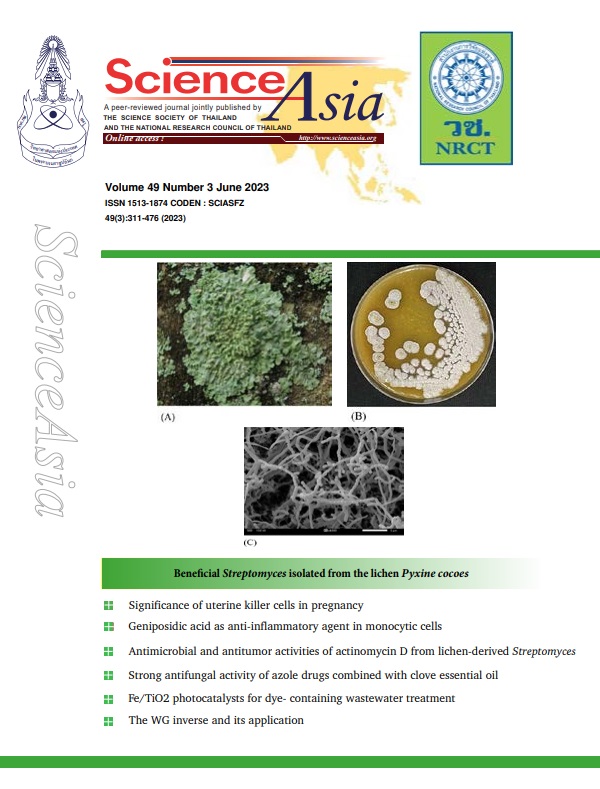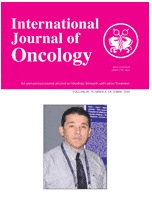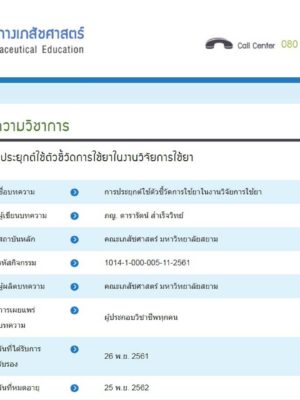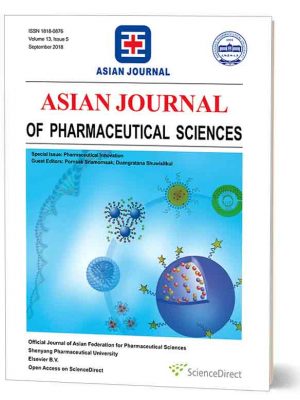
The effect of surfactant on the physical properties of coconut oil nanoemulsions
Abstract
The aim of this study was to develop the water compatible form of coconut oil through nano-emulsification. The effect of different types and amounts of surfactants on the physical characteristics of nanoemulsions containing coconut oil was investigated. Coconut oil nanoemulsions containing varied amounts of surfactants including polyethylene glycol octyl phenyl ether (PGO), polyoxyethylene sorbitan monostearate (POS), polyethylene glycol hydrogenated castor oil (PHC), sodium lauryl sulfate (SLS) and poloxamer 407 (PLX) were formulated and comparatively evaluated for their physical properties. The results showed that the coconut oil nanoemulsions using PGO, POS and PHC as surfactants exhibited low percent creaming index indicating excellent stability, while those containing SLS and PLX demonstrated the higher percent creaming index suggesting lesser physical stability. The droplet sizes of nanoemulsions consisting of 5% (w/w) PGO, POS and PHC were 22.843, 4.458 and 0.162 µm, respectively. Thus, coconut oil nanoemulsions with the smallest size could be obtained when PHC was applied. Furthermore, the droplet size of nanoemulsions decreased from 33 µm to less than 200 nm with an increase in the amount of PHC from 1% to 10% (w/w). Additionally, the properties of coconut oil based nanoemulsions containing PHC were not changed through temperature cycling test. From these results, it was suggested that the fabrication of stable coconut oil nanoemulsions with small particle size could be easily achieved by using 5% (w/w) PHC as a surfactant. The knowledge gained from the study might provide the basic guideline for the fabrication of stable nanoemulsions for food, cosmetic and pharmaceutical fields in the future.
Link to Publication: https://www.sciencedirect.com/science/article/pii/S1818087617308267
Bibliography :Sirikarn Pengon, Nawinda Chinatangkul, Chutima Limmatvapirat, Sontaya Limmatvapirat. (2018). The effect of surfactant on the physical properties of coconut oil nanoemulsions. Asian Journal of Pharmaceutical Sciences, 409-414.
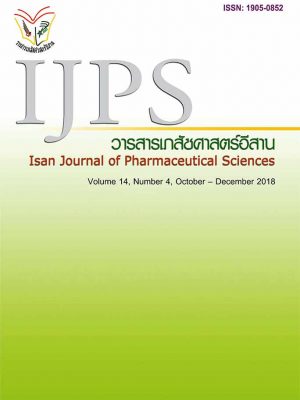
Treatment Guidance of Acute Diarrhea for Community Pharmacist
บทคัดย่อ
Acute diarrhea is a common disorder in drug store and an important problem which affects to public health system. Acute diarrhea may be caused by infectious and non-infectious causes. Acute diarrhea is classified severity of illness based on degree of dehydration as mild, moderate and severe. Community pharmacists have responsibility to provide pharmaceutical care for patients with acute diarrhea. The first step of pharmaceutical care should assess the medical history, symptom severity and causes of diarrhea to consider about treatment settings of patients between drug store or referral to hospital. Selection of medications should be based on efficacy, safety and cost to provide appropriate treatment for individual patient. Pharmacotherapy of acute diarrhea should focus on 1) appropriate use of oral rehydration therapy, 2) appropriate use of antidiarrheal drugs such as loperamide, racecadotril, diosmectite and probiotics in patients with variety of medical conditions. Loperamide should be used with caution in patients with cardiovascular disease, elderly patients and children particularly young children because loperamide has contraindication in children < 2 years, 3) Consideration of antibiotics for treatment of acute diarrhea. There is a very high rate of overuse of antibiotics in drug store and hospital which lead to increase risk of antimicrobial resistance and risk of adverse events. Therefore, appropriate use of antibiotics is an important issue to prevent these problems.
งานที่อ้างถึง
Thanompong Sathienluckana, C. P.-a. (2018). Treatment Guidance of Acute Diarrhea for Community Pharmacist. Isan Journal of Pharmaceutical Sciences, 1-17.

